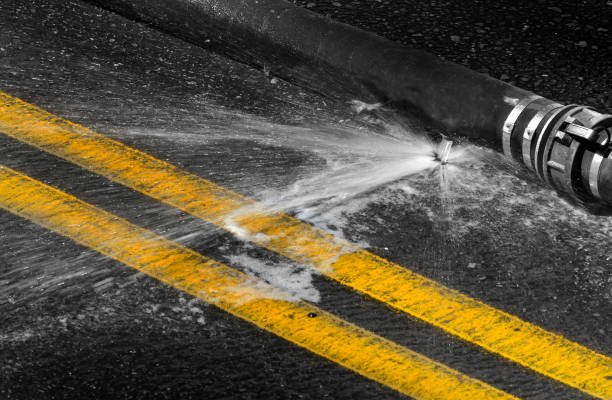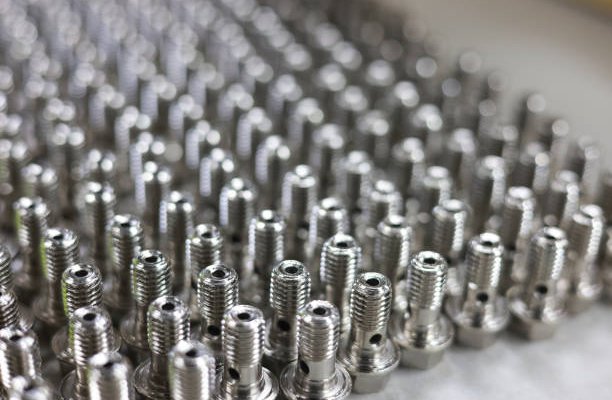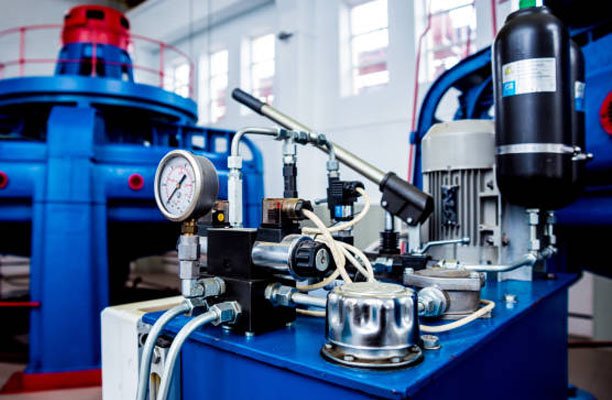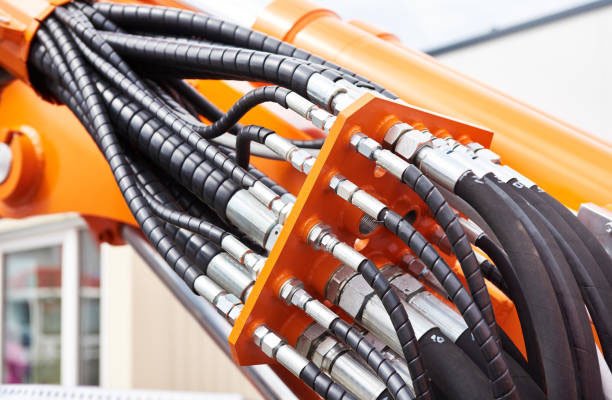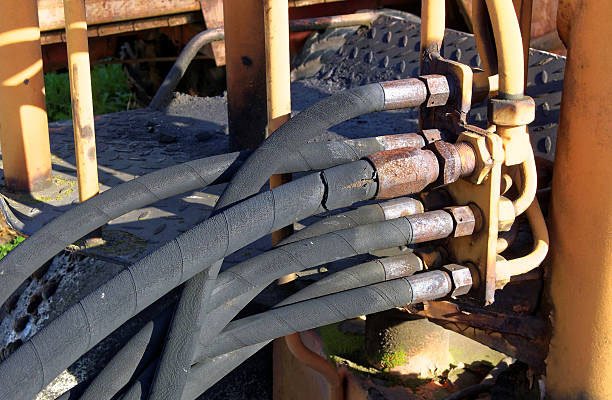Hydraulic hoses are the unsung heroes in machinery, enabling the seamless transfer of power in everything from construction equipment to industrial automation. But when one bursts, it’s not just a minor inconvenience—it can be a major safety hazard and financial disaster. Understanding the top 7 causes of hydraulic hose burst and how to prevent them is essential to ensuring the safety and efficiency of your operation.
Introduction
Importance of Hydraulic Hose Maintenance
Hydraulic systems rely on the integrity of their hoses to function properly. A burst hose can lead to oil leaks, machine downtime, environmental contamination, and even serious injuries.

1. Excessive Pressure and Surges
How Over-Pressurization Damages Hoses
Hydraulic hoses are designed to handle specific pressure ratings. However, frequent surges or spikes above these limits can cause internal fatigue, leading to micro-cracks that eventually rupture the hose.
Prevention: Use of Pressure Regulators and Relief Valves
- Install high-quality pressure relief valves to absorb sudden pressure spikes.
- Regularly inspect and calibrate pressure regulators.
- Avoid sudden changes in machine load or flow direction.
2. Improper Installation Techniques
Common Installation Mistakes
- Tight bending radius
- Torsion during installation
- Lack of adequate slack or support
Prevention: Following Manufacturer Guidelines
- Always consult the hose manufacturer’s installation specs.
- Use proper tools for cutting and crimping.
- Train technicians on correct hose routing and tightening practices.
3. Abrasion from Contact with Surfaces
How Friction Wears Down Hoses
Hoses often rub against metal frames, other hoses, or moving parts. Over time, this abrasion weakens the outer cover, exposing the reinforcement layer and leading to a burst.
Prevention: Use of Hose Sleeves and Clamps
- Fit abrasion-resistant sleeves or guards.
- Secure hoses using p-clamps or brackets to prevent movement.
- Use swivel joints in high-movement applications.
4. Temperature Extremes
Effect of High and Low Temperatures on Hoses
Exposure to temperatures outside a hose’s rating can cause brittleness, swelling, or hardening, significantly reducing lifespan.
Prevention: Temperature-Resistant Hoses
- Select hoses rated for both ambient and fluid temperature ranges.
- Insulate hoses in extreme environments.
- Avoid routing hoses near heat sources.
5. Hose Age and Natural Wear
How Aging Affects Performance
Even the best hoses degrade over time. UV exposure, oil compatibility, and pressure cycling all contribute to aging, making hoses prone to rupture.
Prevention: Scheduled Inspections and Timely Replacements
- Label hoses with installation dates.
- Inspect for signs of cracking, bulging, or wear.
- Replace hoses every 3-5 years even if no visible damage is present.
6. Chemical Incompatibility
How Chemicals Degrade Hose Materials
Hydraulic fluids, cleaners, and external chemicals can react with the hose material, weakening its structure.
Prevention: Correct Hose Material Selection
- Match the hose type with fluid type (e.g., synthetic vs. mineral oil).
- Use hoses with chemical-resistant linings in demanding environments.
- Refer to compatibility charts before switching fluids.
7. Poor Hose Routing
Signs of Improper Hose Routing
- Sharp bends near fittings
- Hoses hanging loosely or under tension
- Hoses rubbing on other components
Prevention: Optimal Layout and Support
- Design systems with gradual bends and minimal stress points.
- Use support brackets to distribute load.
- Implement CAD-based routing simulations for large systems.
Best Practices for Hydraulic Hose Maintenance
Daily, Weekly, and Monthly Checks
| Frequency | Inspection Points |
|---|---|
| Daily | Leaks, visual wear, proper connections |
| Weekly | Fitting tightness, alignment |
| Monthly | Pressure testing, abrasion marks, flexibility |
Maintenance Checklist
- Check for bulges or cracks
- Verify clamp tightness
- Confirm pressure ratings
- Document hose life cycle
When to Replace Hydraulic Hoses
Signs of Imminent Hose Failure
- Fluid weeping from the outer cover
- Kinks or flattened sections
- Stiff or brittle hose feel
Ideal Hose Lifespan
While some hoses last 7+ years, 3-5 years is considered safe for most industrial applications, depending on usage and environment.
Industry Standards and Compliance
SAE, ISO, and OSHA Guidelines
- SAE J517: Design and performance standards
- ISO 18752: Global classification of hydraulic hoses
- OSHA: Workplace safety regulations related to high-pressure systems
Common Myths About Hydraulic Hoses
1. “If It Isn’t Leaking, It’s Fine”
Many operators assume that a hose is in perfect working condition as long as it’s not leaking. This is a dangerous misconception. Hoses may appear intact on the outside while suffering internal damage or microfractures due to pressure cycles or chemical exposure. These hidden issues can lead to sudden and catastrophic bursts.
Reality: Hoses should be inspected regularly for internal damage indicators like stiffness, bulging, or discolored fluid, even if no leaks are visible.
2. “All Hydraulic Hoses Are the Same”
Another myth is that any hose with the right diameter can replace another. However, hydraulic hoses vary in construction materials, temperature range, pressure rating, and fluid compatibility.
Reality: Using a mismatched hose can lead to swelling, cracking, or rapid degradation. Always check manufacturer specifications for compatibility with your application.
3. “Reusing Old Fittings Saves Time and Money”
Technicians sometimes reuse fittings to cut costs, believing it’s safe as long as the part appears undamaged.
Reality: Reused fittings may not crimp properly or might have hidden wear, increasing the risk of leaks or bursts under pressure.
Case Studies of Real Failures
1. Construction Equipment Failure
In one documented case, a hydraulic hose burst on a backhoe during excavation work due to improper installation. The hose had been routed too close to a sharp metal edge, which caused abrasion over time.
Outcome: The sudden loss of hydraulic pressure led to uncontrolled arm movement, narrowly missing nearby workers. The machine was out of commission for 48 hours, resulting in $6,000 in downtime costs.
Lesson Learned: Always use abrasion guards and route hoses away from sharp edges.
2. Agricultural Sprayer Malfunction
An agricultural worker suffered a fluid injection injury when a high-pressure sprayer hose failed due to aging. The hose had exceeded its recommended service life and showed signs of cracking.
Outcome: The worker required surgery, and the farm was cited for safety violations.
Lesson Learned: Implement a hose replacement schedule based on age, not just appearance.
3. Manufacturing Plant Shutdown
A robotic arm in a manufacturing facility failed mid-cycle due to hose burst caused by chemical incompatibility. A cleaning agent used in the plant had slowly degraded the hose material.
Outcome: Production halted for nearly a day. The cost of lost productivity was estimated at over $20,000.
Lesson Learned: Always review chemical compatibility charts when selecting hoses.
Tools and Equipment to Prevent Hose Burst
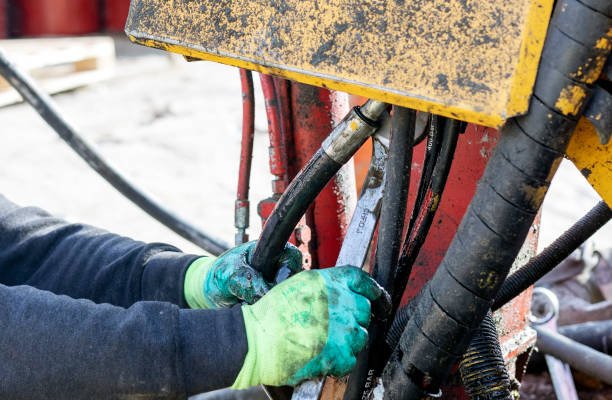
1. Pressure Gauges and Monitoring Systems
Real-time pressure monitoring helps detect abnormal surges that could damage hoses. Digital systems can alert operators to dangerous fluctuations and trigger auto-shutdown protocols.
- Tip: Use gauges with pressure range slightly above your operating maximum.
2. Hose Sleeves and Guards
These protective layers shield hoses from abrasion, UV damage, and contact with hot surfaces.
- Types: Nylon sleeves, spring guards, spiral wrap
3. Routing Tools and Clamps
Proper routing tools help maintain smooth bends and prevent kinks or excessive movement. Clamps and brackets reduce vibration and mechanical stress.
- Tip: Ensure flexible support to avoid pressure points during machine operation.
4. Hydraulic Hose Crimping Machines
These machines are essential for ensuring strong, leak-free hose assemblies. Portable or bench-mounted models are available depending on your workshop setup.
- Safety Note: Improper crimping is a leading cause of failure. Always use calibrated machines and matched fittings.
Cost of Hydraulic Hose Failure
1. Financial Impact on Operations
A single hose burst can stop production for hours or even days. Downtime isn’t just about the cost of repairs—it involves lost revenue, idle labor, delayed deliveries, and potential contract penalties. In industrial settings, downtime can cost upwards of $300 to $1,000 per hour, depending on the complexity of the operation.
Hidden Costs Include:
- Emergency part replacements and technician callouts
- Contaminated hydraulic fluid cleanup
- Wasted materials and defective products
- Logistics rescheduling or shipment penalties
2. Safety and Legal Costs
A burst hydraulic hose can eject fluid at speeds exceeding 600 feet per second. Such high-pressure ejections can penetrate skin and cause fluid injection injuries, which often require surgery and long recovery times.
Legal Implications:
- Worker’s compensation claims
- OSHA fines for non-compliance
- Lawsuits from injuries or environmental spills
3. Environmental and Equipment Damage
Hydraulic fluid spills can contaminate soil, water sources, and nearby equipment. Cleanup must follow environmental regulations, which may include soil excavation and hazardous waste disposal, significantly increasing the overall expense.
Hydraulic Hose Safety Tips
1. Train All Operators and Maintenance Personnel
Every operator should know how to recognize early warning signs of hose failure. This includes:
- Unusual noises or vibrations
- Discoloration of hose material
- Visible leaks or misting
Actionable Tip: Run quarterly safety workshops with visual demos and hands-on practice for identifying and replacing faulty hoses.
2. Never Touch a Suspected Leak
High-pressure fluid can pierce skin even if the hole is the size of a pinhead. Technicians should never use their hands to locate leaks.
Use This Instead: A leak detection kit with cardboard or wood strips is the safest approach.
3. Always De-pressurize Before Maintenance
Before replacing or inspecting a hose, ensure the system is fully powered down and pressure is bled from all lines. Failure to do this can result in sudden hose whip or fluid spray.
4. Label and Log Every Hose
Use barcodes or RFID tags to track each hose’s installation date, pressure rating, temperature range, and replacement schedule. This simplifies audits and reduces human error.
5. Implement a Preventive Maintenance Plan
Establish routine inspection and replacement cycles based on environment, application, and manufacturer’s specifications—not just visual appearance.
Conclusion
Hydraulic hose bursts can cause costly downtime, safety hazards, and equipment damage. Understanding the top causes—such as excessive pressure, abrasion, improper installation, heat exposure, chemical attack, aging, and hose twisting—helps identify the key risks in hydraulic systems. By implementing preventive measures like regular inspections, correct hose selection, proper installation techniques, protective coverings, temperature control, and timely replacement, you can significantly reduce the chances of hose failure. Prioritizing maintenance and best practices ensures system reliability, enhances safety, and extends the service life of hydraulic hoses.
FAQs
1. How often should I replace a hydraulic hose?
Answer: Most hoses last 3-5 years under standard conditions. However, if exposed to extreme heat, chemicals, or pressure fluctuations, earlier replacement may be necessary. Always follow the manufacturer’s guidelines.
2. What is the main cause of hydraulic hose failure?
Answer: The top cause is excessive pressure, often due to system surges or incorrect relief valve settings. Other frequent culprits include abrasion, poor routing, and hose aging.
3. Can a hose that looks fine still be dangerous?
Answer: Yes. A hose can appear undamaged externally but may be weakened inside due to pressure cycling, chemical exposure, or heat. That’s why internal inspections and pressure testing are vital.
4. What’s the safest way to check for hydraulic leaks?
Answer: Use a leak detection spray or a cardboard/paper strip. Never use your hands. A fluid injection injury can be life-threatening and requires immediate medical attention.
5. Is it okay to use hydraulic hoses interchangeably?
Answer: No. Each hose type is rated for specific fluids, temperatures, and pressures. Always refer to SAE and ISO standards and the hose manufacturer’s compatibility chart.
6. What should I include in a hose maintenance checklist?
Answer: Key items include:
- Check for visible wear, cracks, and leaks
- Ensure correct routing and clamp tightness
- Test system pressure and fluid compatibility
- Verify installation and replacement dates

